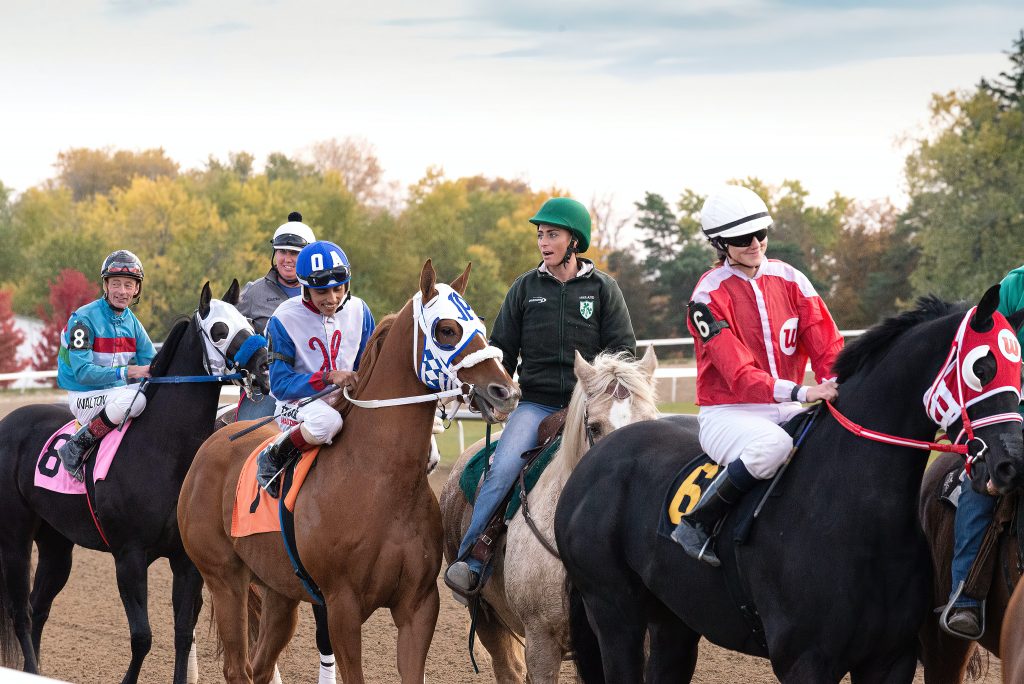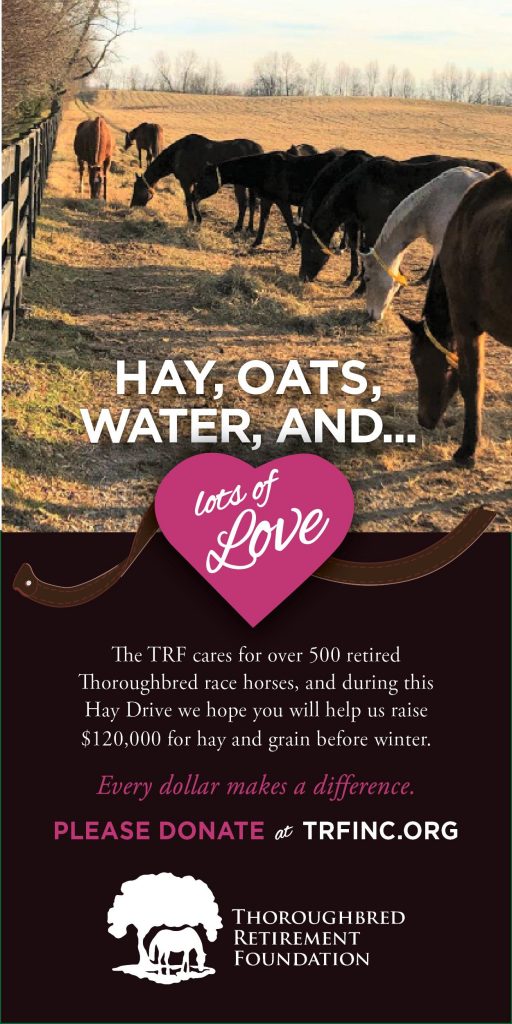
“The nature of leadership is found within its disposition; it is presence, it is as absorbing of environment as it is influential within it. It is versatility of action, patience in perception and imperceptible in deliverance.”
The herd dynamics are those naturally occurring traits, tendencies and characteristics that make up the individual psychology and where this places the horse in the hierarchy of the herd structure. It is in short, the operating system of the physical machine.
The study of the herd dynamics and the vital role it plays in any athletic discipline is a study of the many pieces of the psychological jigsaw puzzle making up what I call the behavioral genetic code. There are many singular areas of essential importance and influence, but none of the collateral pieces are as influential as the sensory system. Physical soundness is certainly desired in the horse-athlete, yet equally essential for the optimization of talent and too often undervalued, is sensory soundness.
Regardless of the athlete or the discipline, stress is a factor to be reckoned with, and there is both physical and emotional stress. The sensory system plays an essential role in stress management as it communicates the external world of the environment with the internal world of the psyche. The efficiency with which information is transferred directly governs the optimization of what we determine as talent while minimizing physical stresses by allowing freedom of motion between mind and body. As with any sport, there is a fine line between being physically capable and psychologically able. It is not enough to consider if the horse can physically handle the rigors of life as an athlete, they must also be capable of handling the emotional demands.
We cannot effectively machinate that which is driven by emotion, as sentient athletes, we must be mindful that horses are often a reflection of their environment. If we really wish to understand the horse, we must take our view, from the hoof.
Found at the leading edge of emotional intelligence is natural mind-to-body fluency, itself manifest from sensory efficiency, or as I like to call it, sensory soundness.
There are two separate aspects of a complete, sound sensory system. The intersection of the commonly understood “physical senses” with the oft mysterious “psycho-sensory” (interpretive). These not only need to properly merge but do so at a rate that is at minimum twice as fast as physical pace for the horse to move fluently (freely) in its environment. No true understanding of the horse can be embraced without first understanding the dynamics of the relationship the horse has between themselves and their environment. The way the external environment is absorbed by the sentience of self reflects the individuals’ emotional intelligence. Communicated through the innate ability to properly interpret and respond to that which is absorbed, emotional intelligence is directly responsible for one’s ability to lead by virtue of its being the foundation of independent nature.
The horse is fundamentally geared to operate best as one among the pieces of herd structure, their placement in the hierarchy determined not by others, but by themselves. Through the laws of nature, herd structure is bound by the fabric of dependent/co-dependent relationships. An individual’s standing within the herd is predicated upon individual efficiency of the sensory system. No matter the type of relationship you have with your horse, or the kind of relationship your horse needs to have with their environment relative to the athletic discipline they are in, the senses play a primary role. The sensory system communicates the environment to the horse, the horse communicates with their environment through their actions within it. The greater part of all physical action is an impulse of emotion.
Characterizing the very definition of herd leadership has less to do with the actual herd than it does the individual. In nature, herd structure is sorted out by the freedom that comes from movement. Challengers to the establishment who are too young or not quite ready to sustain their position have freedom to move off and seek another family group or, for the colts, move into bachelor herds to continue their schooling. The number of horses in their natural landscape who have innate independent nature are few. This form of what I describe as psychological natural selection ensures that only those who can rise above, up through the ranks, are able to do so. A process that in turn preserves the integrity of the herd in a volatile world through the promotion of emotional intelligence.
Indiscriminate breeding will threaten to destabilize any species through the interruption of this natural process. The simple but potentially perilous act of arranged matings between herd dynamics that may not be complimentary or even compatible is a drastic deviation from nature’s intent. Emphasizing physical and pedigree while under-valuing, at best, behavioral genetics, often results in the manufacturing of power without intelligence, which at length becomes untenable. Where we “strengthen” one, we “weaken” the other; when financial gain is the primary goal, Mother Nature is often its casualty.
This is not to say that leadership-worthy emotional intelligence cannot be demonstrated in governed matings. It does mean that if our husbandry of a species is manifest from a “controlled” environment, our processes for selected breeding should be equally thoughtful.
A key subset to the independent nature found in emotional intelligence is within the area in which equine performance is most reliant, athletics. Athletic intelligence is that portion of a horses’ acumen that is expressed through physical motion during times of elevated stress. Subtle in its separation from herd dynamic leadership related to the chain-of-command, athletic intelligence, commonly expressed in the elite herd dynamic, can be effectively represented in the less than elite. In the world of equestrian sports, these differences, and the manner of their expressions, play a significant role in a horse’s ability to perform.
In elite herd dynamic horses’ emotional intelligence is leadership through presence over the course of daily life, including times of high stress and competitive motion where they can impress themselves upon the environment, not be subject to the caprice of change. Their mind to body fluency is innate, the likelihood of emotional fatigue low. Rooted in the natural ability to interpret the environment in both the group herd dynamic, GHD, and the individual herd dynamic, IHD, at a faster rate than physical movement, allows them to ‘move through the environment.’ Behavioral Economics 101; the optimization of physical talent is realized through the auspice of psychological ability.
We can “data and analytics” ourselves right out of being competitive where the nature of performance, is driven by emotion.
Individuals devoid of herd dynamic presence can nonetheless be a leader among their peers as athletic ability expresses through their pattern of motion. Tendencies under stress reflect the true appraisal of athletic intelligence; worth is what you are willing to pay to for the value you hope is realized in the athlete. Competitive acumen operating without the luxury of presence expresses leadership through movement. Adoption of independent nature experienced only after physical rhythm has been established is perilously vulnerable to the caprice of environment. Where emotional intelligence expressed through presence is athletic fluency leading through the environment, those who compete through movement are dependent upon the rhythms of the environment to find mental fluency. In these more common circumstances, the partnership between horse and the human in saddle plays an important role; to ride with fluency means the persons’ mind through the horse’s body. (*See “Sample Profile” on Sport Horse Services & Big Race Analysis @ www.thtbloodstock.com)
The significant psychological differences commonly understood as performance style are as subtle in their disparity as they important to comprehend. When it comes to coaching and training the athlete you must ask, are you developing from the environment into the psyche or from the psyche into the environment?
Prey animals do not have the luxury of being aloof. Horses among these, by an overwhelming majority, are often devoid of the intellect for independence. This is not by mistake. Emotional intelligence in a herd leadership capacity is found only in those rare individuals whose sense of independent nature is not reliant upon athleticism, but acumen. Mother Nature is wise, she knows that in daily life the survival of the herd relies upon only a slight few. However, for the sustainability of the herd structure under duress, temporary herd-member independence is a necessity in greater numbers. These individuals discover independent nature through urgency of motion, their “athleticism” allowing momentary relief from their trammels in the name of safety, (basic instinct). The duration of, or what we at THT Bloodstock refer to as ‘Time-In-Motion,’ (T.I.M.) is the time a particular individual can be isolated from their dependencies and function with purposeful motion until emotional stress causes mental fatigue. The longer T.I.M. the more elevated the horse is in the natural order of herd hierarchy and subsequently the more athletic ability is available.
Athletic intelligence translates to competitive nature when under stress, where learned behavior leaks into natural tendency. Here, pace of physical performance reflects the rate of interpretation and determines the available T.I.M. of independent, purposeful movement. All horses by nature have the capacity for athletic expression in motion, but not all horses have athletic intelligence within their nature, to sustain it. In other words; rendered into the world of human sport, we must appreciate that where we have removed the horse from the wilds of nature, we cannot eliminate the atavistic nature, from within the horse. This reality necessitates herd dynamic makeup be party to physical makeup and pedigree when juxtaposed with the demands of the discipline considered. Investing in the horse because they appear physically suited for the chosen sport does not automatically mean they are mentally akin to adopting it. A feeble recruiting program is one that does not consider what makes the athlete whole.
Adaption and assimilation to situational chaos is what affords versatility in motion; things like “thinking on your feet” and “slowing the game down” are only available to those with fluency in their anticipatory responses. We can coach and develop natural ability where it exists, for we can nurture herd dynamic tendency, however inherent character traits are the true nature of leadership and these cannot be machined or manufactured. Through presence one may lead the masses through the trials of an age, through force, one may only conquer but a moment in time.
*
The most important part of horsemanship is control of your emotions, you cannot effectively coach, train nor teach without it. If you are unable to manage your disposition, you will be unable to properly communicate your intentions. Navigate down the center, and never be so foolish as to think you can fear them into trusting you, if you want to earn trust, teach them how to trust themselves.
If we wish to advance the integrity of equine sports, we must be accountable both for and to, the athletes within it.
~Kerry




